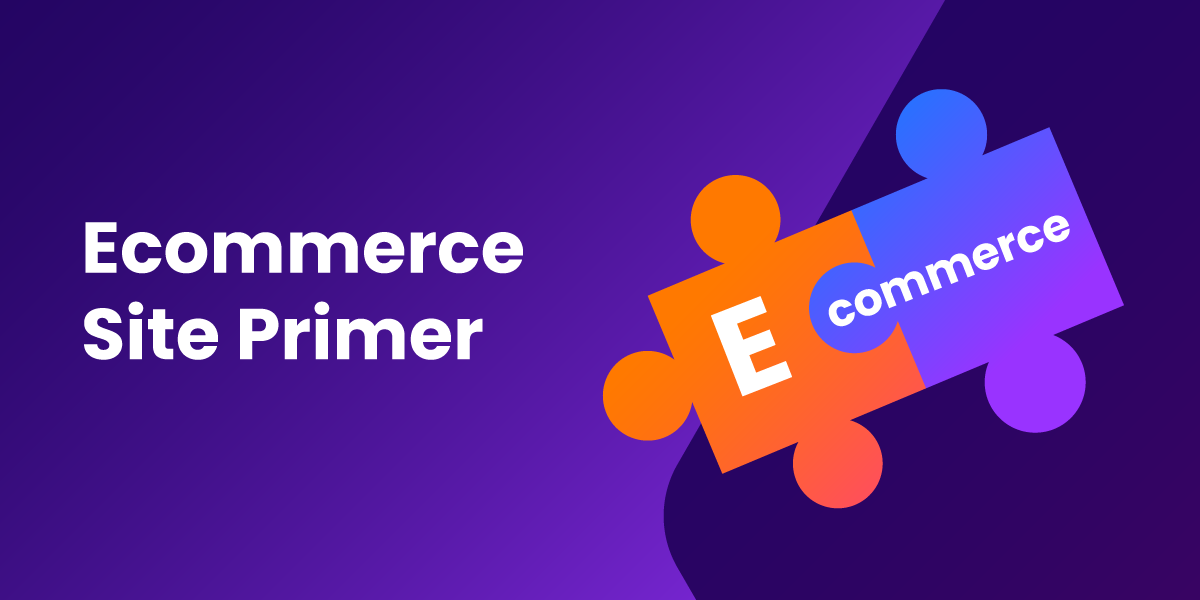Ecommerce Site Primer: A Step-by-Step Guide to Selling Products Online
Today, an increasing number of businesses are taking advantage of the immense potential of ecommerce. With the ability to reach a global audience, sell products 24/7, and reduce overhead costs, an ecommerce website can be a game-changer for your business. However, creating a successful ecommerce website requires careful planning and execution.
In this step-by-step guide, we will walk you through the process of creating an ecommerce website that will help you sell products online effectively.
Understanding the Basics of Ecommerce
Ecommerce has become an integral part of our lives. From buying clothes and gadgets to booking travel tickets and ordering food, the convenience of online shopping has revolutionized the way we engage in commerce. But what exactly is ecommerce? Let's dive deeper into its definition and explore its importance in today's market.
Defining Ecommerce
Ecommerce, short for electronic commerce, refers to the buying and selling of products or services over the internet. It encompasses online retail stores, business-to-business (B2B) transactions, online marketplaces, and more. By leveraging technology, ecommerce eliminates geographical boundaries and opens up a world of opportunities for businesses of all sizes.
Imagine a world where you can browse through a vast selection of products, compare prices, read reviews, and make a purchase with just a few clicks. That's the power of ecommerce. It has transformed the way we shop, making it more convenient, efficient, and accessible.
Importance of Ecommerce in Today's Market
The growth of ecommerce has been nothing short of phenomenal. In recent years, online shopping has become increasingly popular, with consumers embracing the convenience and ease of purchasing products from the comfort of their own homes. Furthermore, the COVID-19 pandemic accelerated the shift towards ecommerce, as more people turned to online shopping to meet their needs.
For businesses, having an ecommerce presence is no longer just an option; it's a necessity. It allows you to tap into a larger customer base, increase sales, and compete on a global scale. Investing in ecommerce can significantly enhance the reach and profitability of your business.
One of the key advantages of ecommerce is its ability to break down barriers. With traditional brick-and-mortar stores, businesses are limited by their physical location. However, with ecommerce, you can reach customers from all corners of the world. This opens up new markets and opportunities for expansion.
Moreover, ecommerce offers a personalized shopping experience. Through data analytics and customer profiling, businesses can tailor their offerings to individual preferences, providing a more targeted and relevant shopping experience. This not only improves customer satisfaction but also increases the likelihood of repeat purchases and brand loyalty.
Additionally, ecommerce provides businesses with valuable insights and data. By tracking customer behavior, businesses can gain a deeper understanding of their target audience, identify trends, and make data-driven decisions. This information can be used to optimize marketing strategies, improve product offerings, and enhance overall business performance.
Different Types of Ecommerce Models
Before diving into the process of creating your ecommerce website, it's essential to understand the different types of ecommerce models. These models dictate the nature of your business and the type of products or services you offer. Let's explore some of the most common types:
- Business-to-consumer (B2C): This model involves selling products directly to individual customers. It is the most well-known form of ecommerce, with examples including online retail giants like Amazon and eBay. B2C ecommerce offers convenience, a wide range of products, and competitive pricing.
- Business-to-business (B2B): In a B2B ecommerce model, businesses sell products or services to other businesses. This often involves bulk orders, long-term contracts, and specialized products. B2B ecommerce focuses on building strong relationships, providing customized solutions, and streamlining business processes.
- Consumer-to-consumer (C2C): C2C ecommerce facilitates the exchange of products or services between individual consumers. Online marketplaces like Etsy and eBay enable individuals to buy and sell products to one another. C2C ecommerce empowers individuals to become entrepreneurs, creating a platform for peer-to-peer transactions.
- Consumer-to-business (C2B): In a C2B ecommerce model, individual consumers offer products or services to businesses. This is often seen in freelance marketplaces, where individuals offer their skills and expertise to companies. C2B ecommerce provides flexibility, cost-effectiveness, and access to a diverse pool of talent.
- Business-to-administration (B2A): B2A ecommerce involves interactions between businesses and governmental organizations. This can include online tax filing, permit applications, and more. B2A ecommerce streamlines administrative processes, reduces paperwork, and improves efficiency.
- Consumer-to-administration (C2A): C2A ecommerce occurs when individuals interact with governmental organizations online. Examples include paying taxes or renewing driver's licenses through government websites. C2A ecommerce simplifies interactions with the government, saving time and effort for individuals.
Understanding these different ecommerce models will help you determine the most suitable approach for your business and guide your ecommerce strategy.
Planning Your Ecommerce Website
Identifying Your Target Audience
Before embarking on the creation of your ecommerce website, it's crucial to identify your target audience. Understanding who your customers are and what they want is key to creating a compelling and successful online shopping experience. Conduct market research, analyze competitor websites, and gather insights about your potential customers' demographics, interests, and behavior. This information will guide your strategic decisions throughout the process of building your ecommerce website.
Determining Your Product Line
Next, determine the products you want to sell on your ecommerce website. Consider your target audience's needs and preferences and choose a product line that aligns with their interests. It's essential to offer a range of products that cater to different customer segments and provide a unique value proposition. Conduct market analysis to identify product trends, evaluate the competition, and ensure that your product line stands out.
Setting Your Business Goals
Before proceeding further, establish clear and measurable goals for your ecommerce business. What do you aim to achieve with your online store? Whether it's increasing sales, expanding your customer base, or establishing a strong brand presence, setting specific goals will help you stay focused and evaluate your progress. Additionally, consider your budget and resources when setting realistic goals for your ecommerce venture.
Choosing the Right Ecommerce Platform
Evaluating Different Ecommerce Platforms
When it comes to choosing an ecommerce platform, the options can seem overwhelming. There are numerous platforms available, each with its own set of features and capabilities. To make an informed decision, consider factors such as ease of use, scalability, customization options, payment gateway compatibility, and integration with other tools or systems.
Take the time to research and compare different ecommerce platforms, read customer reviews, and consider seeking expert advice if needed. Choose a platform that aligns with your business goals, offers the features you need, and provides a user-friendly experience for both you as the store owner and your customers.
Key Features to Look for in an Ecommerce Platform
While every business has unique requirements, there are several key features that you should look for in an ecommerce platform:
- Responsive design: With the increasing prevalence of mobile devices, it's crucial that your ecommerce website is optimized for mobile browsing. Look for a platform that allows you to create a responsive design that adapts to different screen sizes.
- Secure payment processing: Trust is paramount in online transactions. Ensure that the platform provides secure payment processing options and is compliant with industry standards.
- Inventory management: Effective inventory management is essential for a smooth ecommerce operation. Look for a platform that offers robust inventory management features, including stock tracking, alerts for low stock levels, and automated reordering.
- SEO-friendly: Search engine optimization (SEO) is critical for attracting organic traffic to your ecommerce website. Choose a platform that provides built-in SEO capabilities or allows easy integration with SEO plugins or tools.
- Analytics and reporting: Data-driven decision-making is crucial for the success of any ecommerce business. Look for a platform that offers comprehensive analytics and reporting features, allowing you to monitor key metrics and make informed decisions to optimize your website's performance.
Customization and Scalability of Ecommerce Platforms
Consider the customization options and scalability of an ecommerce platform before making your final decision. Your website's design and functionality should align with your branding and meet your specific business needs. Additionally, as your business grows, you should be able to easily scale your ecommerce website to accommodate increased traffic and sales volume. Look for a platform that offers flexibility and scalability, allowing you to adapt and grow as your business expands.
Designing Your Ecommerce Website
Importance of User-Friendly Design
The design of your ecommerce website plays a significant role in attracting and retaining customers. A user-friendly design enhances the overall shopping experience, improves navigation, and builds trust with your audience. Follow best practices such as clear navigation menus, intuitive product categorization, prominent search functionality, and visually appealing product images.
Essential Elements of an Ecommerce Website
When designing your ecommerce website, there are several essential elements that you should incorporate:
- Clear product descriptions: Provide detailed and accurate information about your products, including specifications, dimensions, materials, and any other relevant details. Clear and compelling product descriptions help customers make informed purchasing decisions.
- Easy checkout process: A streamlined and hassle-free checkout process is crucial for minimizing cart abandonment. Simplify the checkout process by minimizing the number of steps, offering guest checkout options, and providing multiple payment methods.
- Customer reviews and ratings: Including customer reviews and ratings on your product pages enhances credibility and builds trust with potential buyers. Positive reviews and high ratings can significantly influence purchasing decisions.
- Call-to-action buttons: Clearly visible and strategically placed call-to-action buttons, such as "Add to Cart" or "Buy Now," encourage customers to take the desired action. Use contrasting colors and persuasive copy to make these buttons stand out.
- Trust signals: Display trust signals, such as security badges, customer testimonials, and money-back guarantees, to instill confidence in your customers and alleviate any concerns they may have about purchasing from your website.
Mobile Responsiveness and Loading Speed
In today's mobile-centric world, ensuring that your ecommerce website is mobile-responsive is non-negotiable. A responsive design ensures that your website displays properly on various devices and screen sizes, providing a seamless user experience regardless of the device being used. Additionally, optimize your website's loading speed by compressing images, minimizing code, and utilizing caching techniques. A fast-loading website not only improves user experience but also positively impacts your search engine rankings.
Conclusion
Creating an ecommerce website can be a complex process, but by following this step-by-step guide, you'll be well on your way to selling products online successfully. Remember to consider your target audience, choose the right ecommerce platform, and focus on user-friendly design. With careful planning and execution, your ecommerce venture has the potential to revolutionize your business and drive significant growth.

 Drive More Visibility, Traffic, and Sales
Drive More Visibility, Traffic, and Sales
